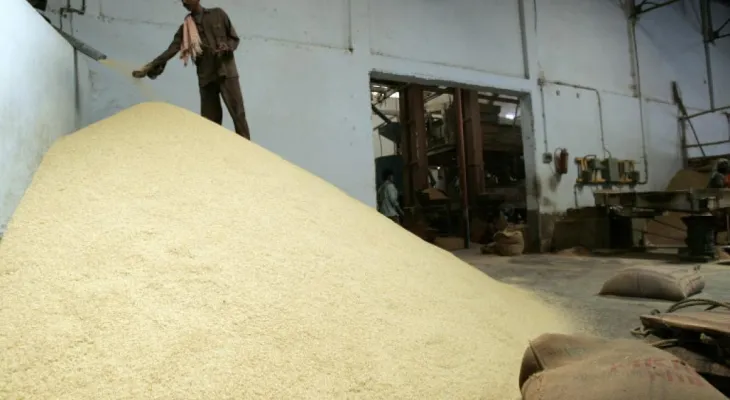Search here
Newspaper
Search here

Arab Canada News
News

Published: July 21, 2023
In an unexpected move, the Indian government decided to halt the largest category of rice exports in a step that would reduce shipments from the world's largest grain exporter by almost half, raising fears of further inflation in global food markets.
The government said it imposed a ban on non-basmati white rice after retail prices rose by three percent in a month, following heavy and late monsoon rains that caused severe damage to crops.
India accounts for over 40 percent of global rice exports, and the decline in stocks with other exporters means that any reduction in shipments could lead to food price inflation already driven to record levels by the Russian war in Ukraine, which erupted last year, and erratic weather.
The Indian Food Ministry stated, "In order to ensure sufficient availability of non-basmati white rice in the Indian market and to alleviate rising prices in the domestic market, the Indian government has revised the export policy," pointing to an 11.5 percent increase in retail prices over the past 12 months.
The global rice market is being disrupted much faster
The affected category of non-basmati white and broken rice accounted for about 10 million tons of a total of 22 million tons of Indian rice exports last year.
The government clarified in a recent statement that boiled rice, which constituted 7.4 million tons of exports in 2022, is not included in the ban.
This move reflects Prime Minister Narendra Modi's government's sensitivity to food price inflation ahead of general elections next year.
His administration extended the ban on wheat exports after curbing rice shipments in September 2022, and this year it halted sugar exports due to falling sugarcane yields.
Indian Rice Exporters Association President P. V.
Krishna Rao said, "His country will disrupt the global rice market much faster than Ukraine did in the wheat market after the Russian war broke out in February last year."
Rice is a staple food for more than three billion people around the world, with nearly 90 percent of the water-intensive crops produced in Asia, where a weather pattern associated with the El Niño phenomenon (a global climate phenomenon affecting weather) usually leads to reduced rainfall.
Global prices are already hovering at their highest level in 11 years
Rao said, "The sudden export ban will be extremely painful for buyers who cannot replace shipments from any other country." He explained that while Thailand and Vietnam do not have enough stocks to cover the shortage, African buyers will be the most affected by India's decision, adding that several countries will urge New Delhi to resume shipments.
Other major buyers of Indian rice include Benin, Senegal, Ivory Coast, Togo, Guinea, Bangladesh, and Nepal, and the ban decision was implemented yesterday, Thursday, but ships already being loaded will be allowed to export.
Weather causes seedling destruction
Heavy rains in northern India over the past few weeks have damaged newly planted crops in several states including Punjab and Haryana, forcing many farmers to replant.
Rice fields in northern states were flooded for more than a week, destroying newly planted seedlings and forcing farmers to wait for the waters to recede before they can replant.
In other major rice-growing states, farmers prepared rice nurseries but were unable to plant seedlings due to insufficient rainfall, and it was expected that the area planted with rice would increase after New Delhi raised the purchase price of rice, but farmers have so far planted rice fields covering six percent less area than in 2022.
This week, rice prices from Vietnam, the world's third-largest exporter after India and Thailand, rose to their highest levels in over a decade due to increasing supply concerns stemming from the El Niño phenomenon.
Broken rice at five percent in Vietnam was priced at $515 to $525 per metric ton, the highest level since 2011.
Meanwhile, a five percent broken variety in India hovers near a five-year peak at $421 to $428 per metric ton. Buyers may shift to Thailand and Vietnam, but five percent broken rice may cost around $600 per metric ton, according to a European trader. Another European trader stated that China and the Philippines, which typically buy Vietnamese and Thai rice, will have to pay much higher prices.
Comments